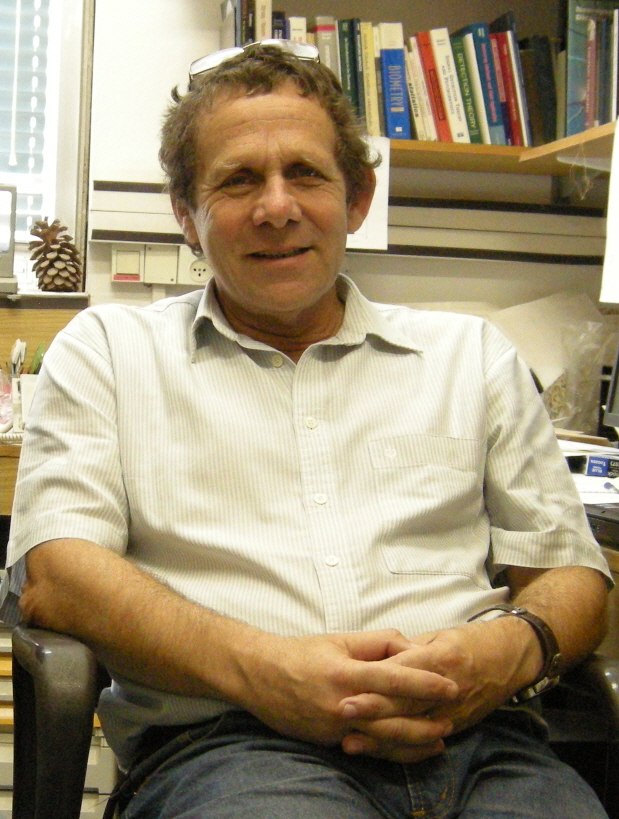 |
  |
| |
|

|
Follow this link for a complete CV in MS word format Born in Tel-Aviv, 1952, married to Revital Attia, 4 kids (Lottem, Marva, Ream and Tsufit)Completed MD-Ph.D. studies at the faculty of medicine, Technion, Haifa, 1984. My first post-doctoral fellowship (1984-1987), under the supervision of Moshe Abeles of the Hebrew university, was devoted to the study of neural interactions in the frontal cortex of behaving monkeys. During that period I learned the methods of recording and analysis of simultaneous multiple neuron activity. |
Current position: Simone and Bernard Guttman Chair in Brain Research (since 2003), Professor of Physiology (since 2004), Faculty of Medicine, the Interdisciplinary Center for Neural Computation (ICNC) and the Edmond and Lily Safra Center (ELSC) for Brain Research, The Hebrew University, Jerusalem, Israel. President of the International Basal Ganglia Society (IBAGS).
Career progression and research interests:I earned my MSc and DSc in the fields of cellular neurophysiology and neural control theory while I was working towards my MD. My first post-doctoral position was with Professor Moshe Abeles in the Department of Physiology at the Hebrew University - Hadassah Medical School, Jerusalem. This is when I first began to be interested in the field of neural networks. I learned to conduct multiple electrode recordings in the central nervous system of behaving primates, as well as how to use advanced analysis methods to decipher neural network physiology. In addition, I spent one night a week as a physician in the Neurology Department of the Shaare-Zedek Medical Center, Jerusalem.
I started to work on the basal ganglia in the normal and parkinsonian states during my second post-doctoral fellowship with Professor Mahlon DeLong in the Department of Neurology, The Johns Hopkins Hospital in Baltimore, Maryland, USA. Our 1990 study (Bergman, Wichmann, DeLong; Science 1990, >1000 citations as of Feb 2012) was the first to identify the subthalamic nucleus as an optimal target for amelioration of Parkinson’s disease. In this study, we also provided the first quantitative analysis of neuronal oscillations in the basal ganglia of parkinsonian monkeys (Bergman, Wichmann, DeLong, JNP 1994).
In 1990, I started my own research group at the Department of Physiology of the Hebrew University – Hadassah Medical School. Most of our research has been devoted to understanding the physiology and the pathophysiology of the basal ganglia and Parkinson's disease. We have carried out multiple electrode recordings in the major structures of the basal ganglia during a variety of decision- making and learning tasks (e.g., Morris et al., Nat Neurosci 2006; Joshua et al., Neuron 2009). Our novel findings of independent spiking activity in the globus pallidus (e.g., Nini et al., JNP 1995; Raz et al., JNS 2000; Bar-Gad et al., JNS 2003) led us to formulate the reinforcement driven dimensionality reduction model for information processing in the basal ganglia (Bar-Gad et al., Progress In Neurobiology, 2003). We have recently extended the model to include gain-cost multi-objective optimization by the basal ganglia networks (Parush et al., Frontiers in Systems Neuroscience, 2011). Our studies of the computational physiology of the normal basal ganglia have been paralleled by multiple-electrode studies of the basal ganglia of primates subsequent to dopamine depletion by systemic MPTP treatment and the emergence of Parkinsonian symptoms. We provided the first description of abnormal synchronization of basal ganglia neurons in the Parkinsonian state (Nini et al., JNP 1995) and have presented a detailed description of this abnormal synchronization over different domains and states of the basal ganglia (Raz et al., JNP 1996, Raz et al., JNS 2000; Heimer et al., JNS 2002). Finally, as part of our long search for better treatment of Parkinson's disease and other brain disorders, we have recently provided the first experimental support to the notion that closed loop adaptive deep brain stimulation (DBS) is superior to standard continuous high frequency DBS (Rosin et al., Neuron 2011). Since 2004, and the inclusion of DBS surgery for advanced movement disorders in national health insurance in Israel, I have been a leading member of the Hadassah Hospital DBS neurosurgical program. I have carried out the electro-physiological mapping in more than 250 human operations, mainly for patients with advanced Parkinson's disease. We now provide DBS to patients suffering from treatment-resistant depression, and are currently applying for Humanitarian Exemption to provide DBS to human patients with treatment-resistant obsessive-compulsive disorder (OCD). Using advanced spectral and analysis methods we have integrated studies of the neural activity in the subthalamic nucleus of our patients and developed automatic and reliable methods for detection of the subthalamic borders and its motor and emotional sub-territories (e.g., Zaidel et al. Brain 2010).
In summary, I consider the basal ganglia to be one of the most critical hubs of brain functions. This is evidenced by the large number of disorders and
patients with basal ganglia related diseases. I believe that I can use my experience and expertise to provide a better understanding of the computational
physiology of the basal ganglia and their disorders. Finally, I hope that I will be able to implement this understanding to provide better treatment for
human patients. Over the course of my career, I have tackled, and often solved, many important research questions in the basal ganglia and Parkinson's
disease fields, usually by applying novel and innovative approaches and techniques that go well beyond the state of the art. I have published 115 articles
in peer-reviewed high-impact and respected neuroscience journals (total citations >6462, H-factor: 39), and 34 book chapters (click here for a complete list of our publications).
 |
|
|
 |
| |
© Copyright 2004 The Hebrew university of Jerusalem. All Rights Reserved. Last update: 21/3/2012 11/04/05 by Boris Rosin | |